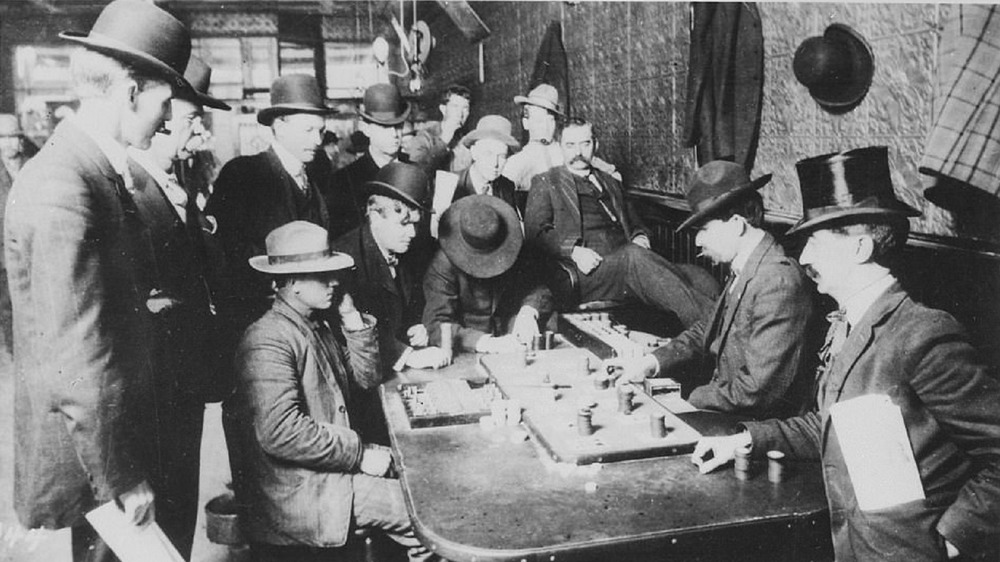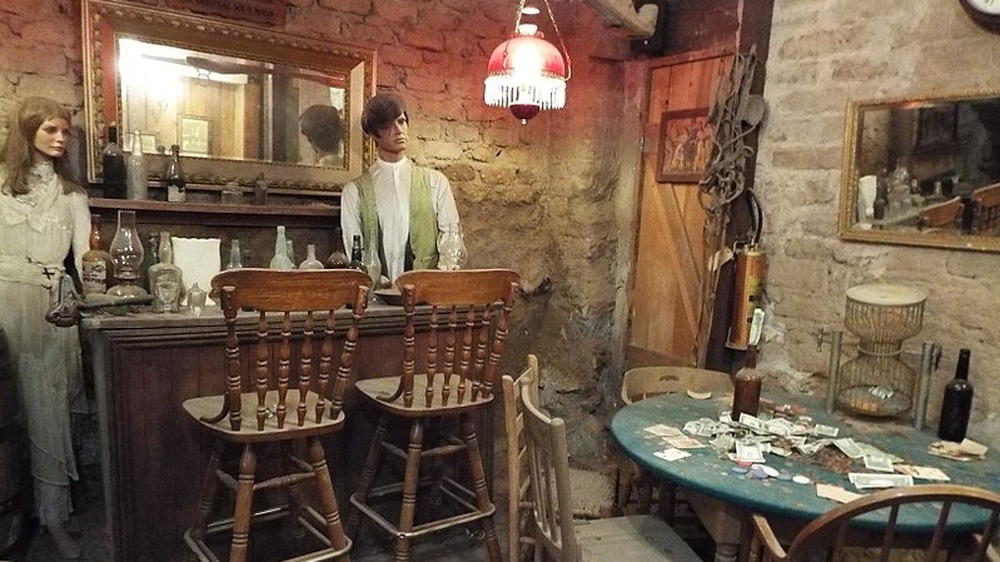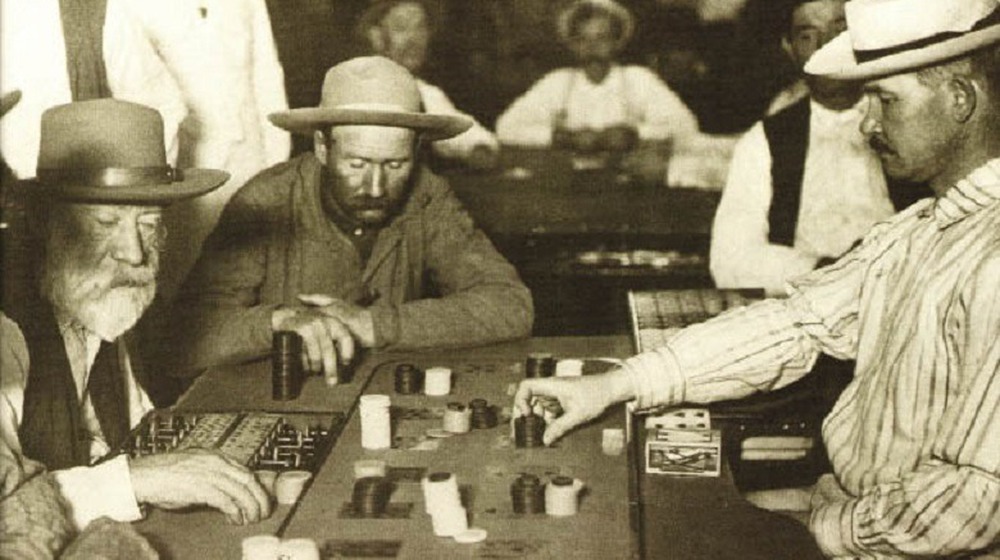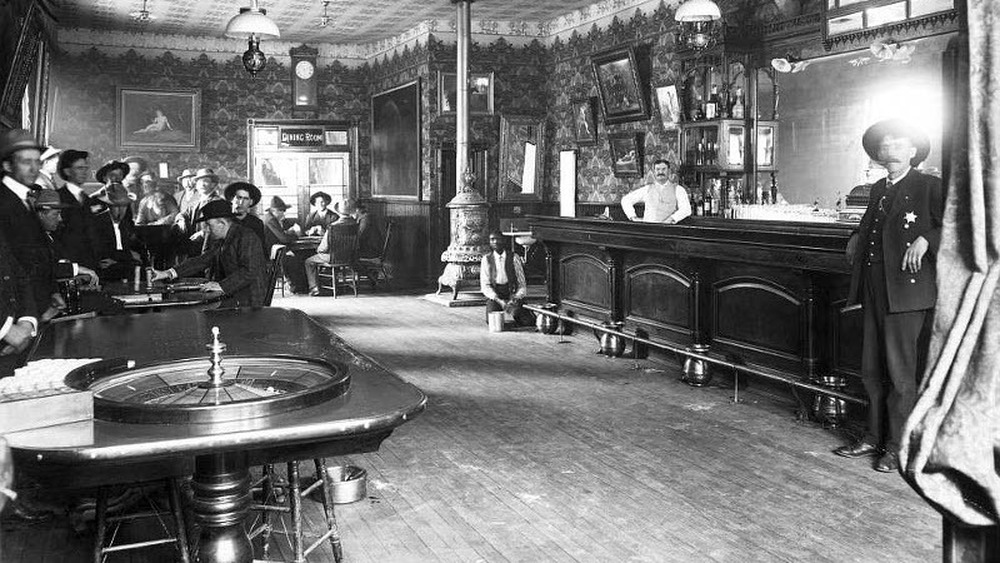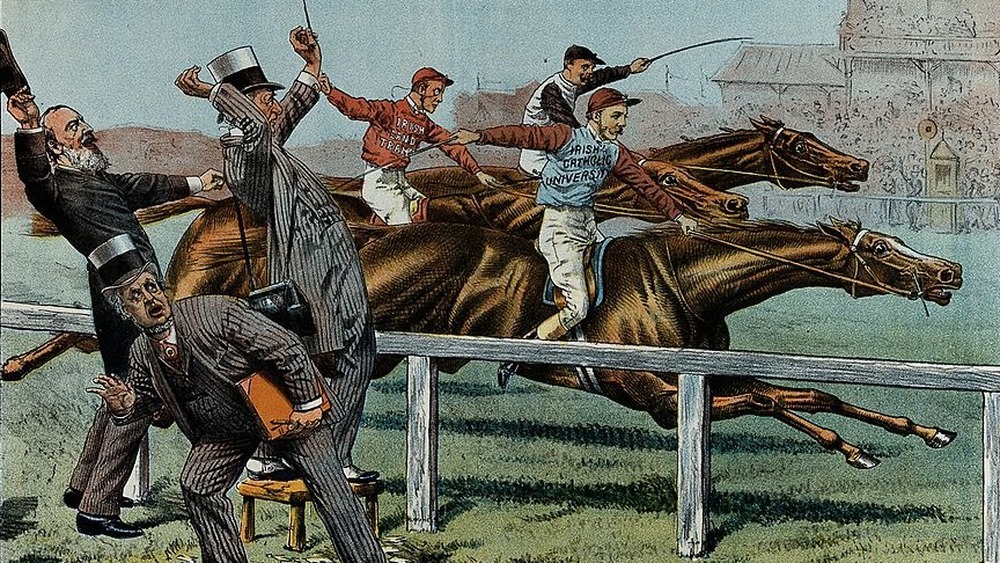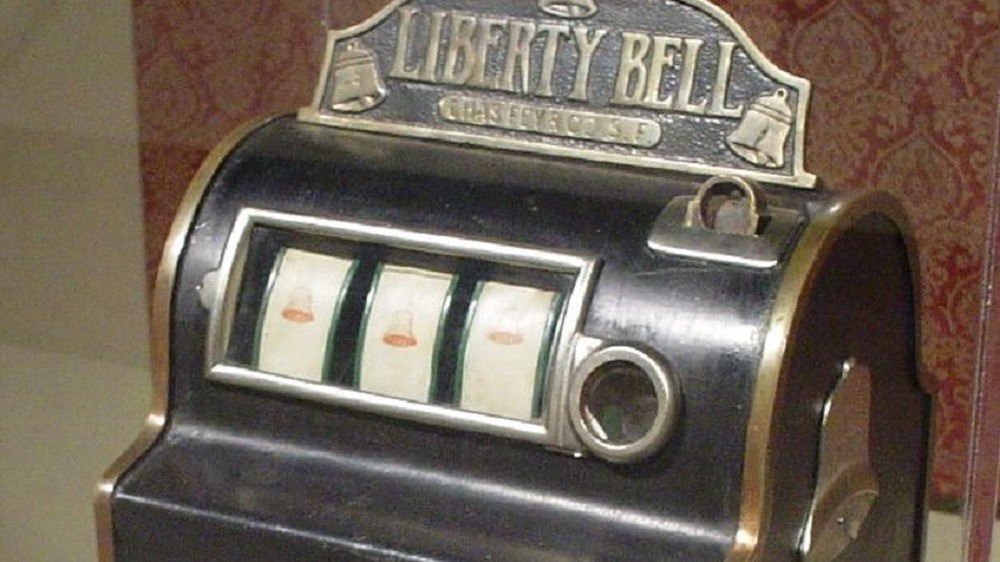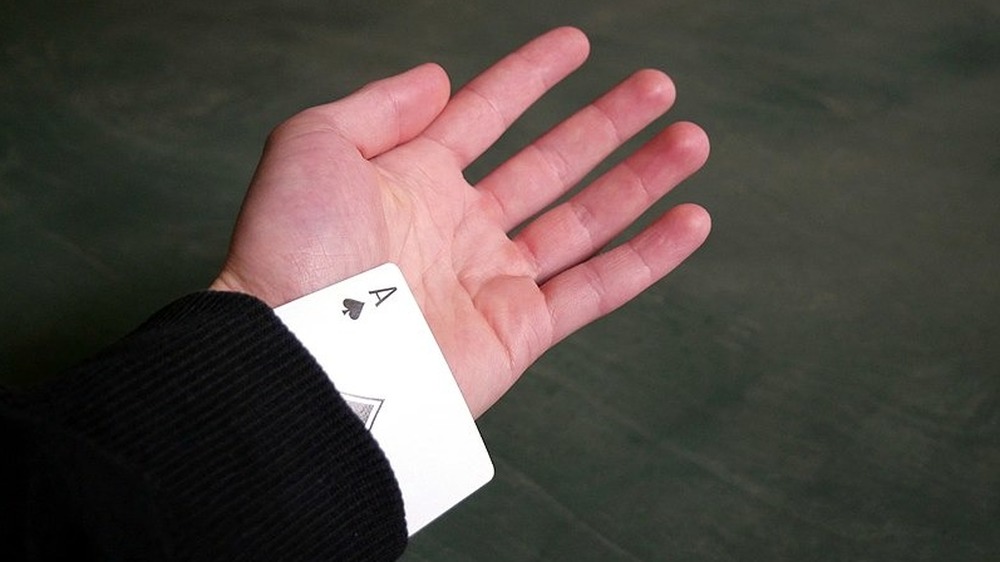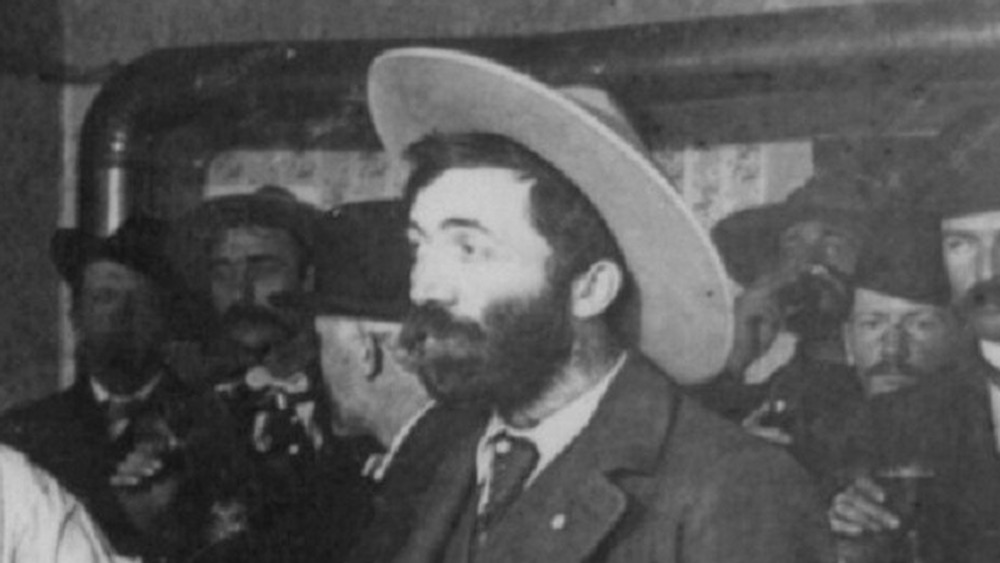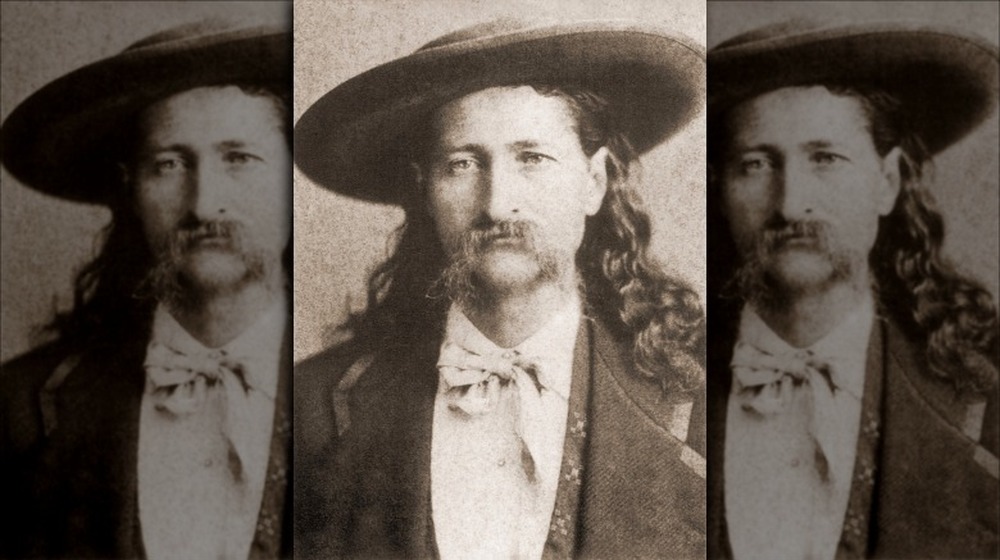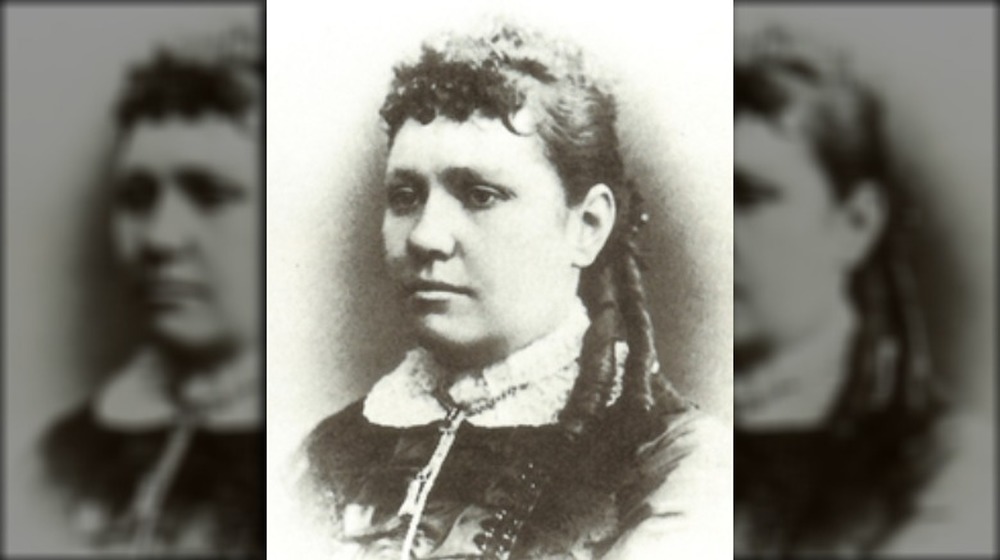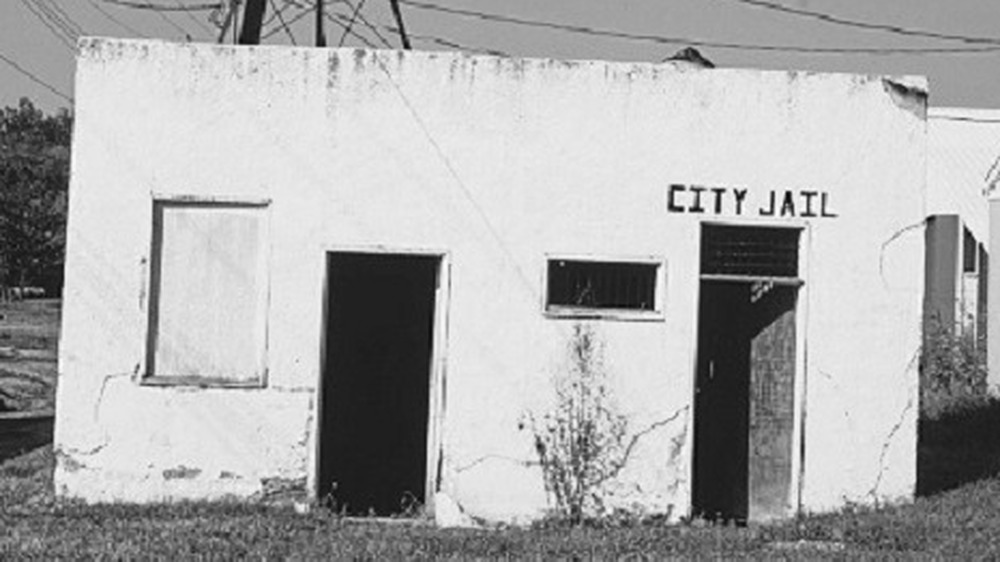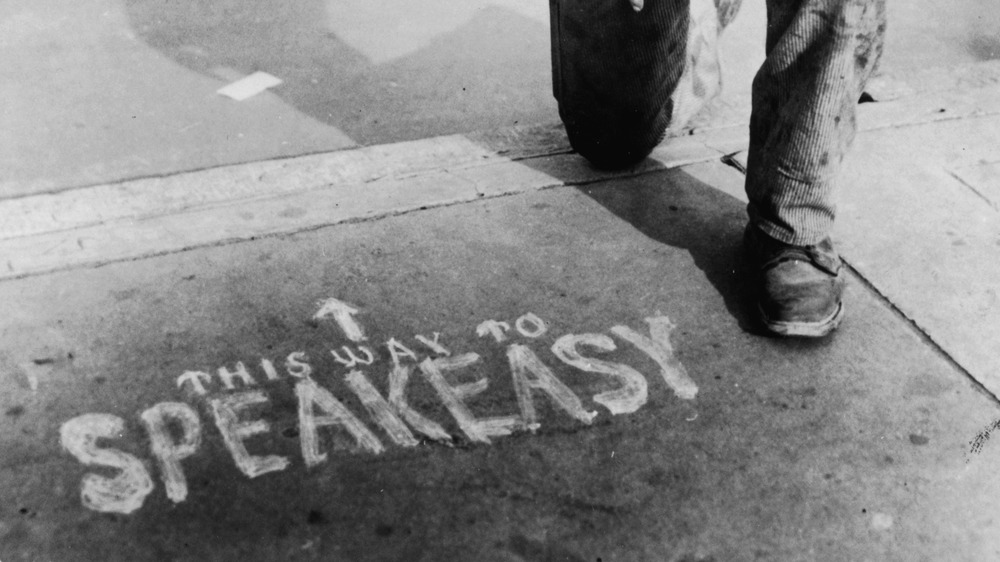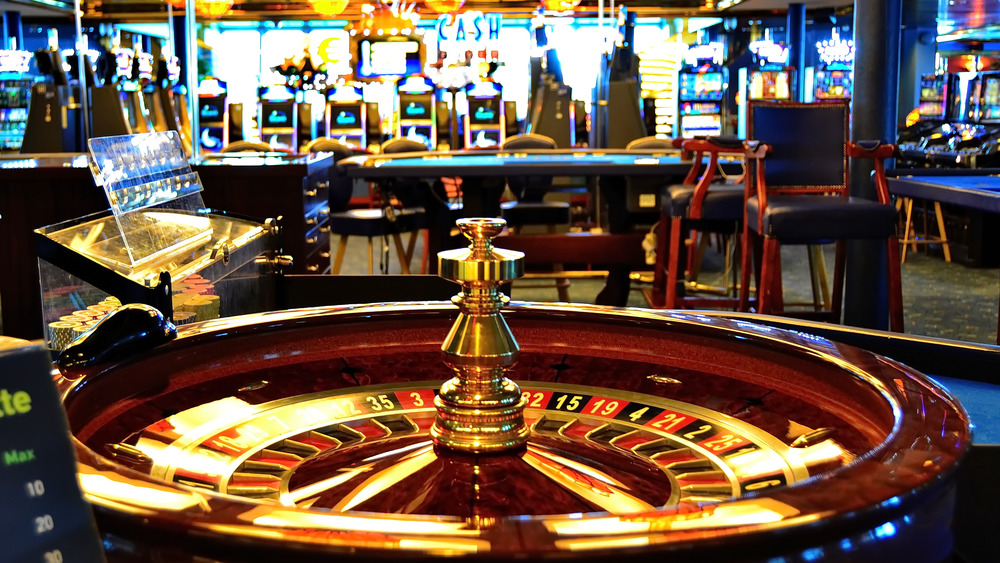What It Was Really Like Gambling In The Wild West
With casinos sprinkled all across America today, most people think they have a grasp on the fine art of gambling. During the 1800s, however, gambling in the Wild West was quite different. Especially in the Wild West, the California Gold Rush of 1849 brought thousands of prospectors who enjoyed trying their luck at games of chance in places like San Francisco. Soon, primitive gaming houses were popping up everywhere, from large cities to small mining camps. Long before theaters and other forms of recreational entertainment were built, the mostly male populations of these places engaged in what History Net calls the "Triple-W" vices — "whiskey-drinking, whoring, and wagering."
Far from the glitzy casinos seen today, early gambling joints could range from "a board stretched between two whiskey barrels" to fancier wood or brick buildings adorned with elegant bars, mirrors, expensive wallpaper, and twinkling chandeliers. Today's love for poker in particular has made the card game a staple of many a western movie, usually taking place in a stereotypical saloon or tent. In truth, however, there were several other ways to win, or lose, one's hard-earned money. Read on for a taste of what it was really like to gamble in the Wild West.
The evolution of gambling in America
The first official casino, Crescent City House, opened in New Orleans in 1827. The games of chance in the famed "Paris of the South" had made their way west by 1849, where San Francisco soon replaced New Orleans as a gambling mecca, says Legends of America. Early casinos offered such games as "Vingt-et-un" (today's Blackjack), Monte, and Faro, all games brought over from New Orleans (via History Net).
Between 1850 and 1910, says Tombstone Travel Tips, "wagering" became all the rage as a most popular form of entertainment. As gambling joints reaped more profits, their owners were able to upgrade their primitive businesses from simple tents and shacks to grander "lounges." In Tombstone, Ariz., proper there were some 18 gambling halls, including the lavishly decorated Bird Cage Theater (pictured), by 1880-81. By then, just about every town across the West offered betting games in some form or another. Some men (and women) became professional gamblers, although True West points out they were nothing like the pros seen today who hide behind sunglasses, hats, and other distractions to disguise their "tells." Players had their choice of lush gaming houses across the West, from the Bird Cage to the even more elite clubs like the Cheyenne Club in Wyoming.
The card games: 21, Faro, Monte, and Poker
Card games were some of the earliest forms of gambling in the West. One of the earliest popular games was "Vingt-et-un," the French name for today's 21, or Blackjack. The game remains similar, wherein a player vied for cards totaling 21 without going over, writes Peter Arnold in "The Book of Card Games." Faro (also of French origin) was also a favorite game, as per History Net. The dealer dealt two cards. The first was the loser, the second the winner. Players bet which would be which until all the cards had been dealt.
Although Faro (pictured) was the favored card game in the West, there was also Monte. The game was played a variety of ways, explains Western Fictioneers, and was quite popular. Last is poker, which also originated in New Orleans, according to Legends of America. Back then, the game was much the same as today, with a few exceptions — only face cards and tens were used, and players were dealt all of the cards with no draw. Draw Poker, meanwhile, used all 52 cards and was known as Jackpots — the very game the legendary Wild Bill Hickok was playing when he died.
The table games: Hazard, Keno, and Roulette
Ever heard of Hazard? A predecessor of today's Craps, Hazard consisted of a player rolling two dice while calling out a number between 5 and 9, explains "The Gaming Table," by Andrew Steinmetz. Roll the number and win. Roll 2 or 3 and lose. But rolling 6, 8, 11, or 12 on subsequent rolls, and a player could win or lose depending on the winning number. Players had three chances to lose before the dice passed to the next player. Chuck-a-Luck was a popular game too, because the stakes were lower for those with less money. Three dice were placed in a small, special cage, and bettors waged on whether which number die would roll out, as well as two of a kind and three of a kind, as per Britannica. Those who couldn't afford the cage used a tin horn instead, hence the phrase "Tin Horn Gambler."
Ever popular, Roulette was also a French game that came West from New Orleans. But "The Modern Pocket Hoyle," by William Brisbane Dick explains that American casinos didn't like the odds the French version gave players and added extra zeroes and an Eagle symbol, which denoted a house win. And Keno pretty much was the same as now, with players placing a bet on a certain set of numbers to be chosen by draw. In Tombstone, Ariz., says Tombstone Travel Tips, one gaming joint employed a town crier to roam the streets announcing the next game.
Sports betting was immensely popular
Long before baseball, basketball, and football, gamblers bet on other "sporting" events. The most gruesome of these, says True West, were "bull and bear" fights wherein the animals were pitted against each other. Cockfights and dogfights were equally popular. Classier folks bet on human footraces, horse and dog races, and competitions between miners in the gold rush towns or loggers in the logging towns. Rifle matches were also quite popular. One of the wildest sporting events in American history was a real bullfight at Gillett, Colo., which has been labeled "both a scandal and a scam."
Then there was boxing, which City Journal says dates back to when plantation owners "pitted slaves against one another and wagered on the outcomes." By the 1880s boxing was more professional (but still illegal), with famous figures like Tommy Burns, Jack Dempsey, Jack Johnson, Jake Kilrain, John L. Sullivan, and others emerging as professional boxers. Later, professional baseball, basketball, and football teams caught the eye of gamblers, according to Northern Kentucky University. In time, what are known today as "off-track betting parlors" became popular, so wagers could be made via telegraph and "pari-mutuel" machines without having to travel to the event itself.
The origins of slot machines
The ol' "one-armed bandit" came on the betting scene fairly late in the Wild West era but remains quite popular today. Britannica explains that the term "slot machine" was short for "nickel-in-the-slot machine," once the only denomination used. The first of these debuted in America during the 1880s but were initially "novelties" wherein a toy horse race or other entertaining event took place, and those betting on the winner got a cigar or cocktail on the house. The first actual poker machine, says California Business Journal, appeared in 1891. Like its predecessors, winners received complimentary bar fare instead of cash.
Not until the mid-1890s did Charles Fey, a mere mechanic in San Francisco, introduce an actual slot machine that rewarded players with money, says Northern Kentucky University. Fey's Liberty Bell slot machine in 1894 and Card Bell slot machine in 1898 proved quite popular (and collectible, since most of the Liberty Bells were destroyed during the San Francisco earthquake of 1906). Other manufacturers followed, and today there are hundreds of different slots out there. Many, however, no longer pay cash but feature "TITO," which Konami explains stands for "ticket in ticket out" for payment at the cashier's window. Disgruntled casino employees who see less cash payouts right from the machines have been known to say TITO stands for "tipping is totally optional."
How cheaters cheated at gambling
Make no mistake, there's a reason gamblers openly brought their guns to the table in the Wild West. Legends of America calls it "the gamblers' code — shoot first and ask questions later." It is true that firearms had no place among liquor-soaked losers who suspected a cheat, but that was the way it was in those days. Indeed, gaming houses were full of "card sharps" (not "card sharks," explains Portable Press) who knew all sorts of ways to part a gambler from his money. True West cites E.M. Grandine and Doctor Cross & Co. as two manufacturers of marked playing cards during the mid-1830s. And there were many other ways to cheat as well.
Grandine also invented an array of delightful devices for card cheats, including bags to attach to the underside of tables and contraptions for concealing cards "on the body." Dealers sometimes dealt from the bottom of the deck, while players could secretly "palm" or "skin the hand" to play or discard cards of their choosing. Those wanting to learn to cheat could also consult S.W. Erdnase's 1901 book, "The Expert at the Card Table" (the author's name, E.S. Andrews, was simply his name spelled backwards). Throughout the 1800s, manufacturers also sold "cheat dealing boxes," says Tombstone Travel Tips, which were especially handy for houses wanting to increase their odds against the players.
Soapy Smith, the biggest con of them all
Jefferson Randolph Smith was nicknamed for his first con during the 1870s, according to Legends of America. He would stand with a table of soap in front of him, cheerfully wrapping each bar with paper money followed by plain paper. Onlookers were told each bar held money as one of Smith's cohorts purchased one and found a $100 bill in it for all to see. Subsequent buyers, of course, found no money with their soap. Smith also loved games of chance, telling others, "I am no ordinary gambler. The ordinary gambler hazards his own money in an attempt to win another's. When I stake money, it is a sure thing that I win" (per History Net).
Using cheating devices and other forms of deceit, Smith wrangled enough ill-gotten cash to make his way to Skagway, Alaska, in 1897. But his lack of scruples angered the townsfolk, who formed a committee, according to History, to catch swindlers like Smith. In turn, Smith formed his own group. That didn't go over well with the others, who were discussing how to proceed when Smith crashed their party in 1898. Engineer Frank Reid battled it out with Smith. "My god, don't shoot!" Smith cried out according to his family's Soapy Smith web page. But Reid did shoot, and Smith was killed.
Famous gamblers of the Wild West
Wild Bill Hickok. Doc Holliday. Bat Masterson. These are just a few of the names Encyclopedia throws out as some of the most famous gamblers in the West. Hickok (pictured), according to Britannica, was a Civil War veteran known for the numerous gunfights in which he participated. When he was shot to death in a Deadwood casino in 1876, the poker hand he was holding included two aces and two eights, forever to be known as a "dead man's hand." Masterson, a former buffalo hunter, according to History, used his winnings to promote prize fights and funding "multiple passions" both before becoming a law-abiding sheriff. Masterson's buddy, the notorious Doc Holliday, was also a professional gambler with a bad temper. And let's not forget Masterson's and Holliday's legendary friend Wyatt Earp, whose "aggressive playing style" made him famous throughout the west.
Lesser known gamblers include Charles Cora, the New Orleans Faro player whom The Belle Cora records as a professional gambler who married his sex worker sweetheart and was accused of murder in San Francisco before being publicly hanged. Head Stuff cites Luke Short as the "gunfighting gambler" who honed his craft in Leadville, Colo. True West writer Robert McCubbin notes that another famous gambler, John Wesley Hardin, played with "an ever-present chip on his shoulder and a gun within reach."
The ladies who were gamblers
Gambling in the Old West wasn't just a man's game. Plenty of noted women were professional gamblers too. One of the earliest of these was Doña María Gertrudes Barceló, better known as Doña Tules, whom History in Santa Fe explains ran a noted gambling den and brothel in Santa Fe, N.M., during the 1840s and 50s. Then there was Eleanora Dumont, the famous "Madam Moustache," who gambled her way across the West starting in the 1840s before committing suicide in Bodie, Calif., in 1879. Carlotta Thompkins, aka Lottie Deno, took Texas by storm in the mid-1860s and eventually retired comfortably in New Mexico, according to Tombstone Travel Tips.
There are more. Minnie Smith, also known as Minnie the Gambler, once horsewhipped a man she caught cheating at cards in Colorado. Kitty Leroy of Texas arrived in Deadwood, S.D., with enough money to open the Mint Gambling Saloon. Unfortunately, Legends of America documents her as being shot to death by her fifth husband in 1877. Last but certainly not least was Alice Ivers Duffield Tubbs Huckert, known as Poker Alice (pictured) to her friends. True West describes her as a talented Faro and poker player across the West. Poker Alice's career began after she found herself widowed with no support, and Deadwood says she died happy in South Dakota in 1930.
If you or anyone you know is having suicidal thoughts, please call the National Suicide Prevention Lifeline at 1-800-273-TALK (8255)
Gambling was eventually outlawed
Not so surprisingly, betting games were frowned upon by proper society and the authorities by the early 1800s, when Tombstone Travel Tips notes that churches back east objected to them. The movement traveled west, and by the late 1800s, says Legends of America, various cities, towns, and states began enacting a bevy of laws against gambling. Some games were merely restricted, while others were outlawed in their entirety. Penalties were initially mild but increased over time. By 1896, newspapers such as the Seattle Post-Intelligencer were noting that although the city had ordinances against gambling, it was still going on.
In Montana, a February 1900 issue of the Billings Gazette outright declared, "Gambling Must Stop" on the front page. It was the end of an era filled with colorful players and wild games of chance as the moral majority began looking down on those who dared to gamble, says Encyclopedia. Not all gamblers were unhappy about it. One veteran gambler, B.S. Comstock, opined in a newspaper in 1905 that gambling and booze went hand in hand and should be outlawed. Little by little, one by one, states across the West began outlawing gambling with stiff penalties for violators. Nevada was among the first to outlaw gaming altogether in 1909, while the territories of New Mexico and Arizona were told in 1912 that they could only become states if they closed their casinos.
The years of illegal gaming
As gambling was slowly but surely outlawed across America, laws against it were fine-tuned to prevent any misunderstandings. Northern Kentucky University quotes a California Penal Code describing a slew of games, from Faro to Monte to 21 and more, that were now illegal to play. Towns in Texas, Oregon, and other places followed suit. A "Commission on the Review of the National Policy Towards Gambling" report notes that even playing cards at home was even forbidden in Prescott, Ariz. What to do but go underground? Indeed, slot machine manufacturers in San Francisco simply rigged their one-armed bandits so that no coins went in, and payouts were made by the house, says Britannica. Other companies revamped their machines to supposedly dispense chewing gum and candy instead of cash.
Interestingly, according to Swamp, certain exceptions were made for churches and "state-sponsored lotteries" who could play bingo and other harmless games to make money. But especially with the enactment of nationwide Prohibition starting in 1919, underworld gangsters took over the now illicit gaming industry. Organized crime became big business as speakeasies quietly popped up to replace the once legal casinos. Texas Guinan was just one of many to run illegal speakeasies back east, as well as in the west. Finally, according to HG Legal Resources, the stock market crash of 1929 led to legalizing gambling in places like Nevada, where lucky Las Vegas and other cities remain gambling meccas today.
The games remain the same today
Today's avid gambler can wager his or her hard-earned cash on a variety of racing events, or sports, or pretty much anything sports betting places have to offer. With legal gaming of one sort or another in 25 states as of 2020, according to the American Gaming Association, it's easier than ever to place your bets on a variety of games — many which are derived from the betting games from the Old West. Still popular, confirms Gaming Zion, are Blackjack, Poker and Roulette. The old dice game of Hazard is now known as Craps. And, Northern Kentucky University notes, Baccarat remains a favorite of gamblers from China especially.
What about slot machines? Although yesterday's quaint reel-to-reel slots have morphed into glitzy cartoons on a screen (and few retain the lever you pull to make it go), Britannica maintains that even casinos like the slots since they are actually "the largest profit generator" in any given gaming house. Those who can't get to a casino in person can also find all kinds of internet casinos too, although The Daily Gazette explains that the legality of online gambling remains very tricky. The site also shows which states allow internet gambling and which do not. But let's face it — online gambling doesn't come close to what it was like to gamble in the Wild West.
